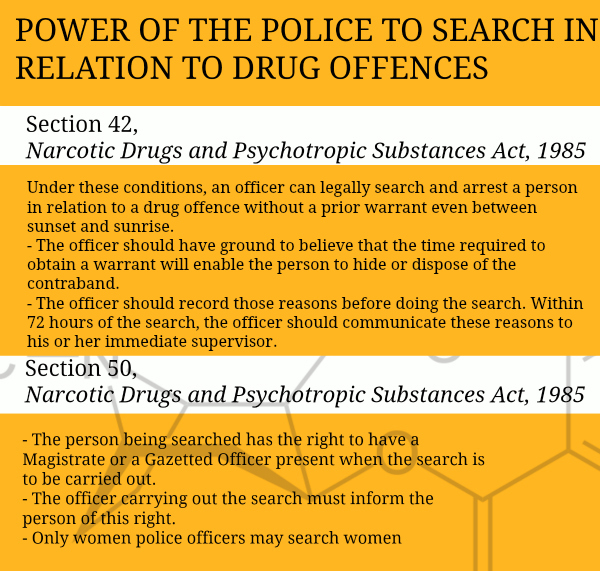 Understanding the need for greater awareness to deal with sexual offences has come into focus over the last two years. The law in this regard is changing. However, there still remain some gaping holes in a framework that should be comprehensive. This article explores some of the issues that remain unaddressed by the current laws in force, in India, concerning sexual offences.
Understanding the need for greater awareness to deal with sexual offences has come into focus over the last two years. The law in this regard is changing. However, there still remain some gaping holes in a framework that should be comprehensive. This article explores some of the issues that remain unaddressed by the current laws in force, in India, concerning sexual offences.
Rape Shield Laws
In India, victims of sexual offences are guaranteed anonymity. Under Section 228A of the Indian Penal Code, 1860, disclosing the identity of a victim of certain sexual offences is a crime. Till as late as 2003, it was lawful to bring up the previous sexual history of a victim of rape in order to establish consent. In 2003, a provision of the Indian Evidence Act, 1882 (“Evidence Act”) was deleted in a move towards providing protection to the victims of rape. Further, Section 146 of the Evidence Act now prohibits the questioning of a victim of rape along the lines of her previous sexual history in order to prove consent, in a rape trial. These provisions together, provide a limited rape shield in the Indian legal framework.
Rape shield laws limit the ability of defendants to cross-examine complainants in rape trials about their past sexual history. They also prohibit the disclosure of the identity of alleged rape victims.
 The philosophy behind these laws, firstly, is that the prior sexual history of a complainant is irrelevant to the question of whether an offence of rape can be established. The facts of the particular instance should be the only evidence that determines guilt. They provide an extra layer of protection to “victim blaming”, the phenomenon of holding the victims of crimes partially or even completely responsible for the rape. The violation of their anonymity and the disclosure of the identity of a rape victim often lead to more violation through increased scrutiny and the stigma attached to the offence of rape. Moreover, given that sexual offences violate the most fundamental right of a human being to exist in peace with full bodily integrity, rape victims often feel a deep sense of fear and trauma when identifying their attackers. Maintaining the anonymity of rape victims is therefore also aimed at providing victims with a sense of security when noting their testimony.
The philosophy behind these laws, firstly, is that the prior sexual history of a complainant is irrelevant to the question of whether an offence of rape can be established. The facts of the particular instance should be the only evidence that determines guilt. They provide an extra layer of protection to “victim blaming”, the phenomenon of holding the victims of crimes partially or even completely responsible for the rape. The violation of their anonymity and the disclosure of the identity of a rape victim often lead to more violation through increased scrutiny and the stigma attached to the offence of rape. Moreover, given that sexual offences violate the most fundamental right of a human being to exist in peace with full bodily integrity, rape victims often feel a deep sense of fear and trauma when identifying their attackers. Maintaining the anonymity of rape victims is therefore also aimed at providing victims with a sense of security when noting their testimony.
Rape shield laws around the world
These laws trace their origins to the 1970s and 1980s in the United States of America when most of the states provided different levels of protection for rape victims such as mandatory anonymity and restrictions on the admissibility of the previous sexual history of victims as evidence in rape trials. Since then, rape shield laws have been formulated in many jurisdictions. In the United Kingdom, the Youth and Criminal Justice Act of 1999 prohibited the use of a victim’s sexual history as evidence in a trial. In New Zealand, a rape victim’s sexual history has to be vital to the context of the trial for it to be permitted in evidence. Otherwise, the law prohibits the use of such evidence. Similarly, in Australia, rape shield protection is applicable in all territories. Even Ireland, a fairly conservative jurisdiction, has rape shield protection for victims of sexual offences with very limited exceptions to the prohibition of admissibility of the victim’s sexual history as evidence.
Conflict with fair trial rights
Often however, rape shield laws present a conflict with the defendant’s rights to a fair trial, including the defendant’s right to confront the complainant and challenge the veracity of the allegation. The rape shield law in the United Kingdom for example, was read down by the House of Lords, holding that a law that bans juries in rape trials from hearing evidence that an accused had a previous sexual relationship with the accuser breached his right to a fair trial.
Thus, most rape shield laws are couched in negative terms, completely excluding the rape victim’s sexual history from being introduced as evidence. Thereafter, exceptional cases are listed where such evidence may be introduced, notable among them being situations where the defendant’s constitutional right to a fair trial may be violated.
The argument for some measure of anonymity of the defendant in trails of sexual offences is finding some ground in current debate as well. It is opined that it is necessary to keep the identity of the defendant under wraps, at least until the judgment in the case is declared. This is because the stigma attached to sexual offences can deeply affect and destroy the lives of not just the direct victims of the offences, but also the relatives and family members of the defendants.
Absence of a rape shield law in India
Indian laws provide limited protection to victims of sexual offences by prohibiting the disclosure of their identity. The need for a rape shield law in India needs to be seen alongside efforts to combat other types of secondary victimisation of rape victims. Rape victims in India would often be subject to insensitive examination and humiliation by public authorities such as medical examiners and law enforcement professionals in charge of investigating the offence, including the “two-finger test”, (“TFT”) involving a physical examination by a medical practitioner of the rape victim’s genitalia. (In India, a man cannot be a victim of rape). The medical practitioner would insert two fingers into the rape victim in order to establish the “laxity” of her muscles and determine whether the victim was “habituated to sex”. A finding that the complainant was habituated to sex would assist the defence. In fact, in such cases, the defendant would claim that any sexual intercourse between the victim and himself was consensual since the victim was “used to sexual intercourse”. The pervasiveness of the two-finger test meant that successful prosecutions for rape were limited to instances where the victim was a virgin or at least perceived to be so, at the time of the occurrence of the crime.
The Supreme Court of India has repeatedly grappled with the TFT and has had many a scathing opinions on its applicability. A decisive change of the law occurred last year in Lillu v. State of Haryana in 2013. The Court outlawed the TFT in the following words: “…., the two finger test and its interpretation violates the right of rape survivors to privacy, physical and mental integrity and dignity. Thus, this test, even if the report is affirmative, cannot ipso facto, be given rise to presumption of consent.”
In light of this judgment, on December 16, 2013, the Department of Health Research under the Indian Council of Medical Research issued guidelines to prohibit the use of the TFT in forensic medical examinations of victims of rape. This prohibition is now part of the Instruction Manual for Forensic Medical Examination Report of Sexual Assault (Victim) brought out by the Government of India.
It is now a medically accepted fact that the loss of virginity can occur without intercourse. Given this scientific evidence, it becomes necessary to re-evaluate the way the law perceives and protects victims of sexual offences. Discarding the use of the TFT was a small step.
There is an immediate need for clear legislative directives throughout the judicial hierarchy, the media and members of the law enforcement agencies to approach the crime of rape with greater sensitivity. It is the need of the hour to implement a humane and a sensitive understanding of the offence of rape so that a rape victim’s trauma is not prolonged through brutal investigation and trial procedures.
(Suhasini Rao is part of the faculty on myLaw.net.)
(This article was corrected on May 1, 2014 to remove an error of law. The prior version did not take into account the 2003 amendment to the Evidence Act. We are grateful to our readers for bringing this to our attention. – Editor)



